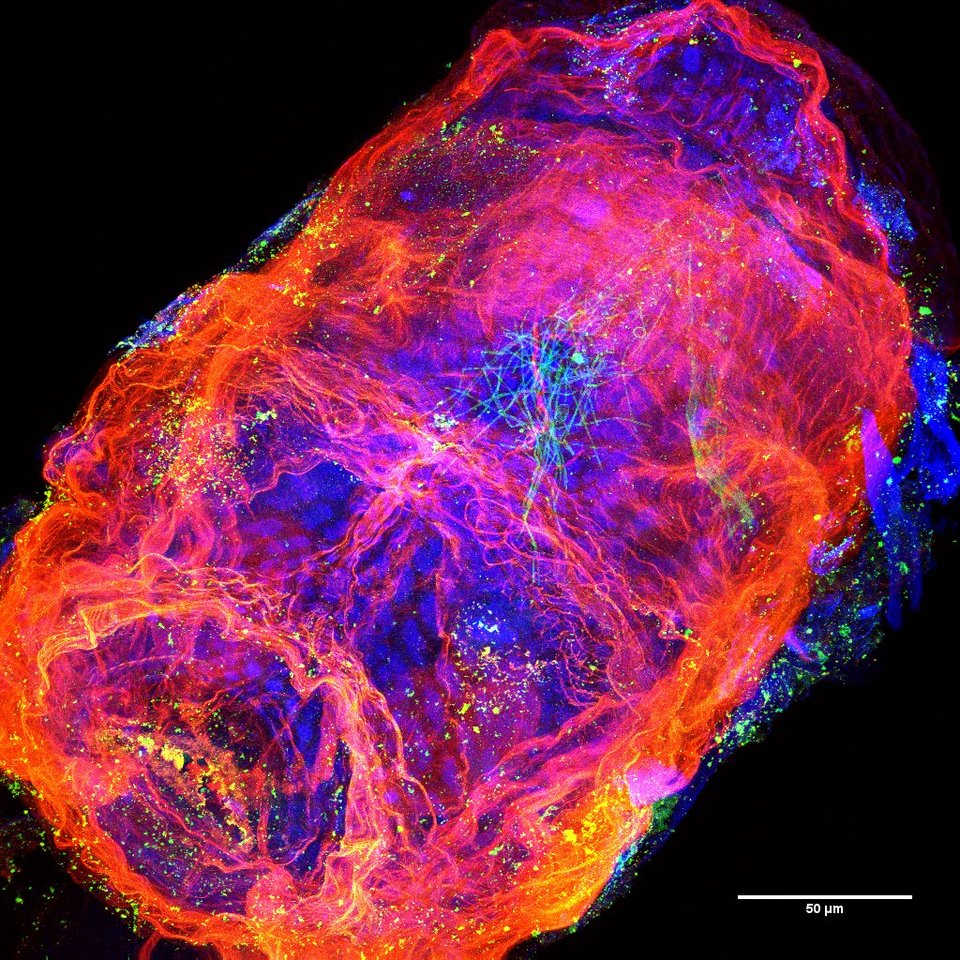Zentralinstitut der Humboldt-Universität zu Berlin

Self-Moving Materials
The priority project Self-moving Materials examines the functional mechanisms and structural coherence of the complex filigree filter shells of tunicates vs. those of architectures, machines and other biological systems. The question of how the spatial allocation of structures can encode functional movement is addressed through experimental microscopic processes and digital-mathematical modelling of physical parameters, as well as with reference to comparisons of cultural history. The intrinsic code of the structures, as documented and analysed in images, is subjected to synthetic statements of various processes of extrinsically coded worlds. A historical dimension is added to the question of the relationship between the code and material of dynamic structures in cultural history analyses.
Research topic
From the interaction between architecture and materials research, the project seeks to obtain new insights into self-moving materials and their uses. The objective of bio-inspired materials research is to take evolutionary »solutions« from nature and apply them to the production of artificial materials. Indeed, there exist natural materials that can directly make use of changes in the parameters of the environment (e.g., humidity or tem-perature). Among plants, one finds wheat seeds that perform creeping movements and pine cones that open on their own. The energy for these movements is either stored directly in the material itself or is made available through the environment.
These materials are autonomous and therefore particularly effective mechanisms of movement; thus, they provide an interesting and forward-looking option for architecture. With the migration of dynamic structures and functions into the materials of architecture, it may become possible for regulatory actions, which would otherwise need to be directed by a human being or apparatus (e.g., a thermometer), to take place as a synchronic reaction to environmental stimuli.
Objectives
Through nano-, micro-, and macroscopic investigations of self-moving materials, the project seeks to analyze their dynamic structures and movement functions and apply them to architecture. While research on biomaterials assumes no distinction between elements and materials in nature, architecture is genuinely concerned with the distinction between construction components and construction materials.
This contradistinction between the working methods and strategies of materials research and architecture will be eliminated in experimenting with 2- and 3-D models. The laws of transference, which depend on the respective observation of scales and are found in the parameters of the material itself, will be systematically illuminated to establish new strategies for sustainable energy conservation on a theoretical and practical level.
Execution
In researching natural materials, the structure can be determined in detail from the macroscopic to the nanoscopic scale, but the function is not known a priori. However, the opposite situation applies in the technical realization of a new artificial material. Here, the desired function of the material is clear, and the challenge is finding and realizing the appropriate structure of the material. As a rule, the functionality of a material depends on a combination of material properties. So-called Ashby plots, in which different materials are compared in a diagram based on their properties, will serve as a point of departure for classification according to function. The list of properties will be expanded to include a description of the interplay between humans and the material, above and beyond the scientific description.
The project will profit from a collaboration with Y. Brechet (Grenoble), a pioneer in the field of »materials selection,« currently at the Max Planck Institute in Potsdam as a Gay-Lussac-Humboldt Science Prize recipient. Classification by structure is little developed in the natural sciences, with an orientation primarily toward practical aspects (e.g., periodical and non-periodical structures). A collaboration with art historians and architects who have experience in classification, and with the project »Attention & Form« will contribute new solutions. In the laboratory, structural comparisons will be undertaken on different scales and will be applied experimentally to the principles of architectural construction. The practicability of application on a different scale will be achieved through load tests in the laboratory.
Securing the results
We are planning to publish a construction atlas of automotive materials and to realize an exemplary architecture in the laboratory building of the cluster.
